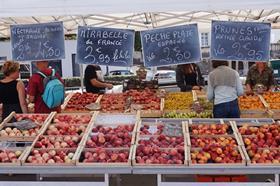
Analysts predicted a drop in global peach and nectarine volumes at the annual Europêch’ meeting, held during the Medfel exhibition in the French town of Perpignan, despite many regions being unable to publish complete forecasts.
Attendees heard that recent unstable weather in Europe, including bouts of frost and hail, had made it practically impossible for many production regions to offer any kind of accurate prediction, with only the earliest growing areas providing estimates.
According to the announcements made in Perpignan, the south of Italy anticipates a volume of 488,530 tonnes of peaches and nectarines, while the centre of the country should produce around 70,850 tonnes. That total of 559,380 represents a decrease of 6.5 per cent compared with 2015 and a drop of 6.3 per cent on the 2010-2014 average.
In Spain, only the early production regions of Andalusia, Valencia and Murcia were able to produce forecasts, of 104,610, 29,525 and 137,000 tonnes respectively. The combined volume of 271,135 tonnes represents a fall of 12 per cent on 2015, but a rise of 27 per cent over the five-year average.
Production areas on the decline
Although full production forecasts were impossible, analysts were able to highlight a slight drop in the production area for peaches and nectarines in the north of Italy, France and Greece, with only Spain recording a minor increase.
Italy’s growing area has fallen by around 5 per cent, mostly in the north of the country in Piedmont and Emilia-Romagna, with the south in fact recording an increase.
According to Gabriele Ferri of Ortofrutta Italia and Naturitalia, this decrease in production area is leading to an improvement in the overall quality, with the less attractive and less tasty varieties usually the ones uprooted.
France’s production area has continued to diminish, by around 5 per cent, mainly due to the plum pox or sharka virus in the Roussillon and Rhône-Alpes.
Overall decline on the cards
Analysts were, however, able to make a general prediction on global peach and nectarine production volumes, anticipating a slight decrease compared with 2015, as well as with the five-year average.
Consumption levels will of course depend to a large extent on the weather conditions over the summer months, higher temperatures favouring higher consumption.
Yet Javier Basols of Spain’s Cooperativas Agro-alimentarias said that other competing products were just as relevant to the success of the European peach and nectarine campaign.
“Everyone is concerned about temperatures in Europe that may or may not favour stonefruit consumption,” he said, “but just as important are the harvests of direct competitors such as cherries, strawberries and other berries.”



